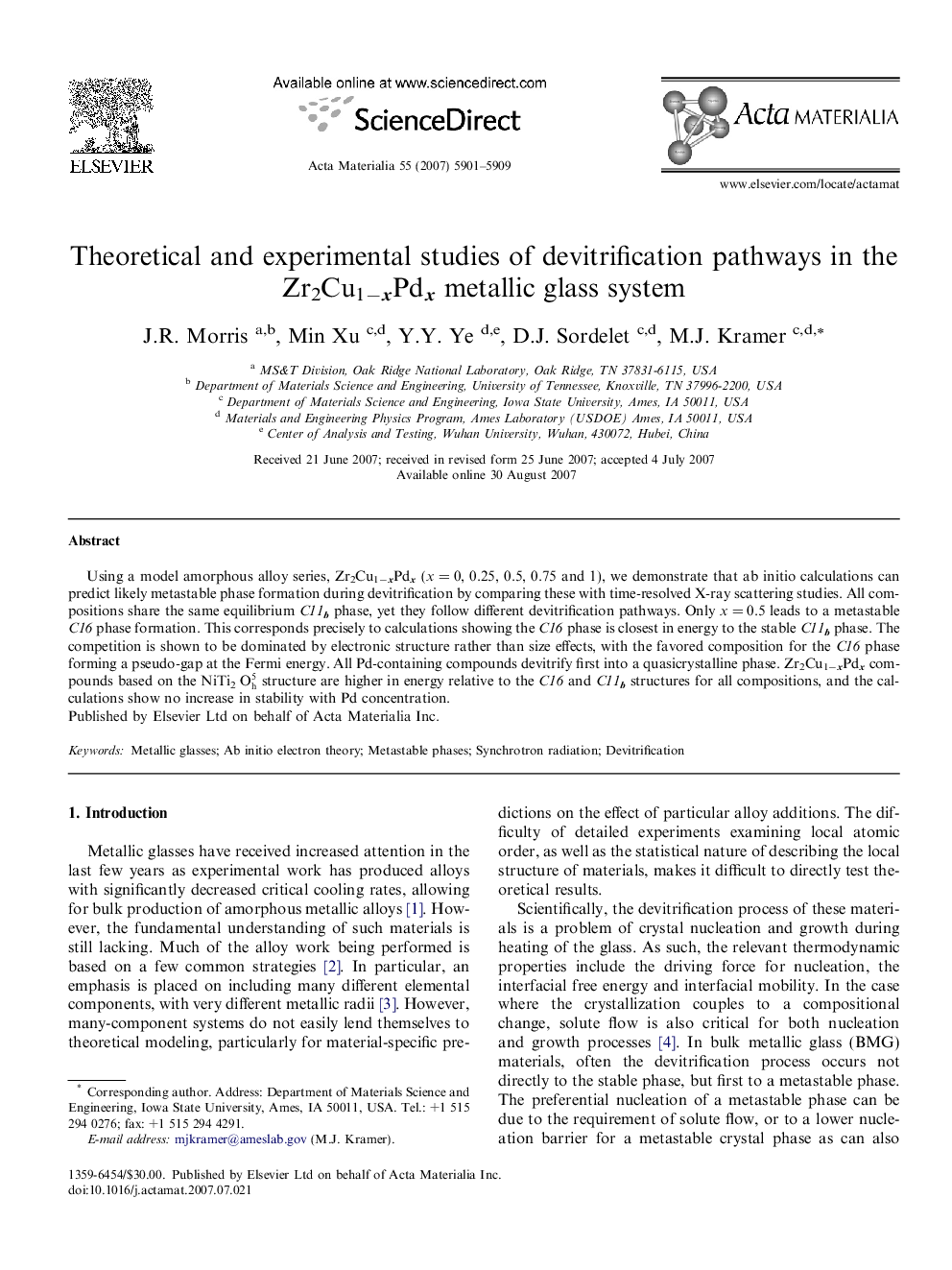| Article ID | Journal | Published Year | Pages | File Type |
|---|---|---|---|---|
| 1449736 | Acta Materialia | 2007 | 9 Pages |
Using a model amorphous alloy series, Zr2Cu1−xPdx (x = 0, 0.25, 0.5, 0.75 and 1), we demonstrate that ab initio calculations can predict likely metastable phase formation during devitrification by comparing these with time-resolved X-ray scattering studies. All compositions share the same equilibrium C11b phase, yet they follow different devitrification pathways. Only x = 0.5 leads to a metastable C16 phase formation. This corresponds precisely to calculations showing the C16 phase is closest in energy to the stable C11b phase. The competition is shown to be dominated by electronic structure rather than size effects, with the favored composition for the C16 phase forming a pseudo-gap at the Fermi energy. All Pd-containing compounds devitrify first into a quasicrystalline phase. Zr2Cu1−xPdx compounds based on the NiTi2Oh5 structure are higher in energy relative to the C16 and C11b structures for all compositions, and the calculations show no increase in stability with Pd concentration.
